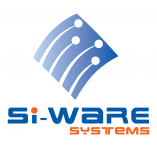IP Valuation Tool

What is IP Valuation?
Your IP could be as valuable as your machines, office equipment or any other physical assets. It could even be your single most valuable asset which you could use to secure finance for company growth. You may also need to know the value of your IP assets when seeking funding or looking forward to licensing your IP.
Valuing IP is not an easy task. How much is your brand name worth after years of marketing? Does your patent protect your product or is it redundant?
Intellectual property rights change in value for a variety of reasons. A patent may begin its life as a unique solution to a problem, but in time other solutions to the problem may be found which reduce its worth. Alternatively, successfully marketing your product can ensure your patent is very valuable. Trademarks generally gain value as they become better known.
How do you value your IPR?
There are a number of ways to value IP rights (IPR). They all have their limitations and no method is appropriate in every case. The stage of development of the IPR, the availability of information and the aim of the valuation all have a bearing on the method used.
Here are 3 useful examples:
1.The cost method
This valuation is based on the costs you incurred developing or creating an IPR. It also values what it might cost to recreate or develop a similar invention. It doesn’t take into consideration the current market value of your product.
Costs usually included are:
- labour
- materials and equipment
- research and development
- testing and trials
- registering the IP
- overheads for utilities
This method assumes that your potential buyer can avoid these costs by buying the IPR .
Valuable benefits may be:
- time: by purchasing the right from you, the buyer will not waste time researching and developing their form of IP
- expenditure: if attempting to recreate their own IP, the buyer would spend at least this much
- success: a buyer may not be successful in developing the IP
- protection: a buyer may not be able to protect their IP, and may well be infringing on others
This method of valuing intellectual property assets lends itself to an overall assessment when buying a business. It also considers assets when they are at an early stage in their development. However, the emphasis on costs, rather than profit, can skew the figures so that market potential is not fully recognised. This method does not take account of future value. It therefore, misses out on a standard by which value is traditionally calculated.
2. The market value method
Understanding the value of your product based on its recent track record in the marketplace. This may be a more reliable way of establishing what people might pay for your IPR. Assessing the sale or licensing of similar products in the market may provide a useful benchmark.
The problem with this method is that it can be very hard to find published data on IP transactions as they are often confidential. IP transactions are hard to generalise. There are sources of data for various sectors, but they tend to provide a wide range of figures for sales and licenses which are only broadly comparable.
Few transactions allow a valid comparison and arrangements may differ in terms of:
- exclusivity
- payment structure
- any technical/other support provided
- territory, economic climate and market conditions.
No two deals are the same.
This method can be useful for researching the high, low and average royalty rates paid in any given market sector. In negotiating a license agreement, for example, an agreed industry range may form the basis of a discussion.
3. The income or economic benefit method
This method focuses on the revenue IP rights may generate for your business in the future. It considers the future income, which a right may generate during its economic life. Risk is factored into the equation. The end result is described as the ‘Present Value’ or PV.
Although the PV is a useful, easy-to-use tool. It should be remembered that the income or economic benefit method of valuation is based on an assessment of likely future events rather than past performance.
Difficulties with this method include:
- it is difficult to estimate the economic life of the IPR
- it is difficult to estimate the income over several years
Other factors that need to be taken into account and is reflected in the Risk factor include:
- the strength of the IPR
- the size of the potential market
- the nature of the competition
- changes in the economic climate
The way in which the IPR is exploited, the costs involved, the time it will take to get to market and the risks involved along the way will vary from business to business.
Uncertainties about the future mean that it is unrealistic to project income for more than 4 or 5 years. Trying to estimate the income for early stage technology is very difficult.
A sub-method of the income or economic benefit method is the relief from royalties method. This method assesses IP royalties. It is based on an assessment of what royalty costs will a company avoid by virtue of owning the IP right.
This content contains public sector information licensed under the Open Government Licence v3.0, and was previously published on gov.uk






































































EgyptInnovate site is not responsible for the content of the comments